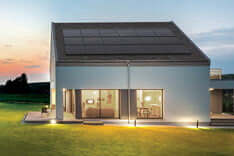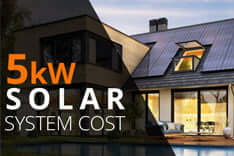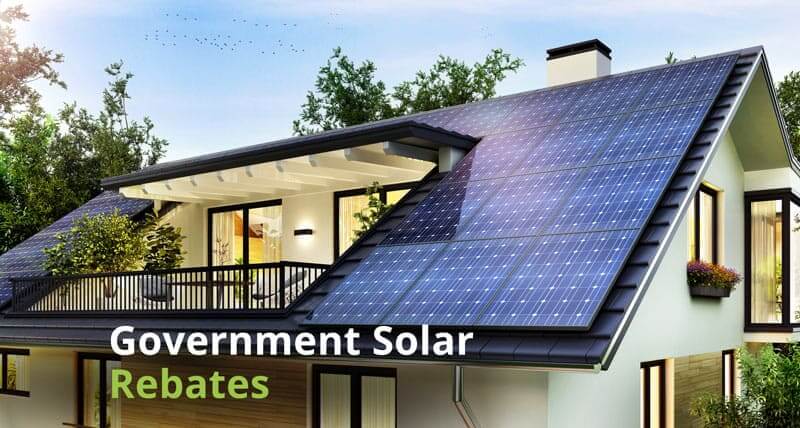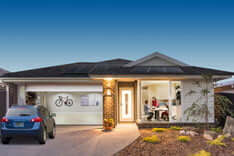Home Reviews Suntech Solar Panels Review
Suntech solar panels review
Read our review guidelines
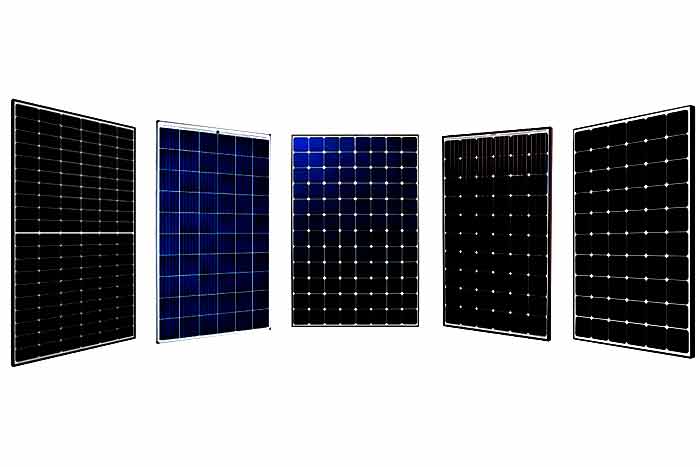
Suntech’s solar panels have proven to be serious players in the competition, taking on the big names such as Canadian Solar and Hyundai with their impressive performance and efficiency. However, when it comes to value for money, they’re ranking at a 6.5 out of 10. Additionally, they’ve encountered some financial turbulence due to issues with warranty claims.
The good news is they do have an Australian-based office, which makes claims much easier. Not all manufacturers that sell panels in Australia have an office here.
One of their strong points is how they hold up in windy conditions which makes them perfect for rural properties or near the coast.
Table of Contents
TogglePros and cons of Suntech solar panels
Pros
- Module efficiency rating of more than 20%
- Impressive warranties
- Rigorous quality control
- Can withstand heavy wind and snow loads (5400/3800pa)
- Cost-effective
Cons
- The company’s history of financial problems could cause warranty claims issues in the future
- The panels are not suitable for small rooftops
How much do Suntech Solar Panels cost?
Suntech offers affordable solar energy, making the panels an excellent choice for homeowners on a tight budget. The cost per watt ranges between $.020 to $0.55, depending on the type of Suntech solar panel you choose. Below are prices for a whole solar system, fully installed. The costs include:
- Complete turnkey installation with the Suntech solar panels
- Solar GST and STC rebate
- Installation from a qualified and fully vetted solar installer from gosolarquotes.com.au
| System Size(kW) | Average cost (fully installed) |
|---|---|
| 6kW | $5,048 |
| 8kW | $7,182 |
| 10kW | $9,339 |
Important: The solar panel prices vary depending on your location, installer, and the inverter brand you choose.
How are Suntech Solar panels better or worse than their competitors
Cost: 8.5
Quality: 7
Performance: 6.5
Warranty: 6.5
Efficiency: 7
Value for money: 6.5
Overall Rating: 7/10
After its founding in 2001, Suntech Solar rapidly grew, and by 2011, it became the largest solar panel producer in the world, shipping about 24GWs globally.
However, Suntech encountered massive financial problems in 2012 when they realized the 560 million Euros worth of German government bonds they had been holding were forgeries. The company declared bankruptcy shortly after the scam, but it was able to rejuvenate in 2014.
Although Suntech Power has not been able to keep up with today’s giant solar panel manufacturers in the solar power industry, they are now manufacturing slightly more solar panels than they were a decade ago.
| Product name | Suntech HiPerforma series | Canadian Hiku Series (mono) | Hyundai SG Series |
|---|---|---|---|
| Manufacturer Logo |  | 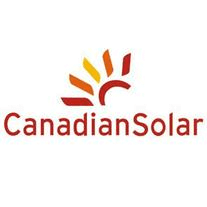 |  |
| Product image |  | 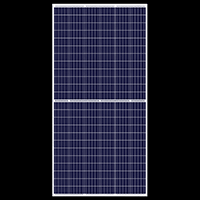 |  |
| Cell Number | 60 – 72 cells | 144/120 dual cells | 340 cells |
| Cell Type | Monocrystalline Silicon 166mm | Monocrystalline | PERC Shingled |
| Power Output | 450W | 330W – 455W | 350W |
| Panel Efficiency | 20.6% | 20.37% | 20.2% |
| Company average turnover (USD) | $1.24 billion | $2.85 billion | $39 billion |
| Annual Power Degradation | 0.45% | 0.55% | 0.55% |
| Number of busbars | 5 | 9 | N/A |
| Approximate cost per watt (AUD retail incl GST) | $0.55 | $0.53 | $0.62 |
| Approximate cost per module (AUD retail incl GST) | $205 | $195 | $217 |
| Dimensions | 2096 x 1040 x 35mm | 1,765mm X 1,048mm X 40mm | 1,622mm × 1,068mm × 35mm |
| Weight | 23.9 – 28.9kg | 21.1 – 37.5 kg | 19.8kg |
| Product Warranty | 12 years | 12 years | 25 years |
| Performance Warranty | 30 years | 25 years | 25 years |
| Operational Temperature Range | -40°C to 85°C | −40° C to +85° C | -40°C to 85°C |
| Made in | China | China, Thailand & Vietnam | China |
| Datasheet supplied? | Yes | Yes | Yes |
Australian office?
Yes! Suntech has representative offices in most major cities in Europe and a production factory in the US. Their main office in Australia is located in Chatswood, New South Wales.
Why an Australian office is important
The Australian office is crucial for sorting out warranty claims and other issues. It’s much better than dealing with solar installers who often go out of business well within the lifetime of your solar panels and are very unreliable.
An office in the country also eases the burden of calling offices in China, which takes time to process your warranty claim and attend to your problems.
Are Suntech solar panels perfect for rooftop solar?
Yes and No. While Suntech is arguably one of the best brands in the Australian market, it’s not the right solar panel choice for every home. Due to their lower efficiency (18.4%) compared to the industry’s leading (22.0%) efficiency panels, they are not a viable option for homeowners with small roof spaces.
But for homeowners with a large roof, the solar modules are not only a great choice; they are cheaper too! You’ll have to install several solar panels to achieve your home’s desired output.
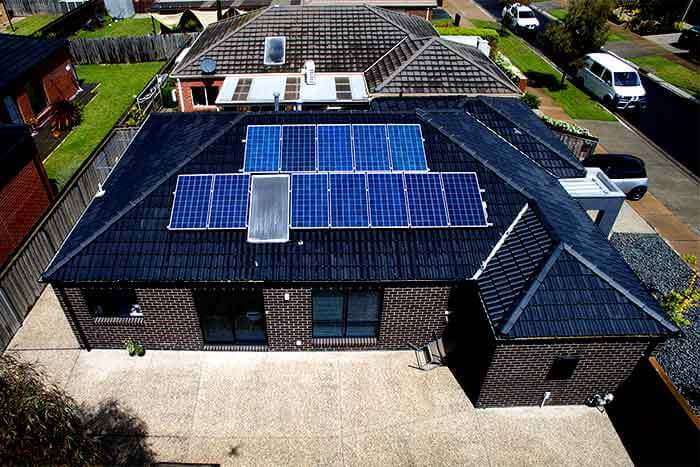
Range of Suntech panels reviewed
Suntech is a clean energy council-approved solar power company and has a range of 29 solar modules listed on their Australian website. The Suntech solar panels range we will cover in this article include:
- Suntech Standard Module
- Suntech PERC Mono (Hypro)
- Suntech Double Glass
- Suntech HIPerforma Series
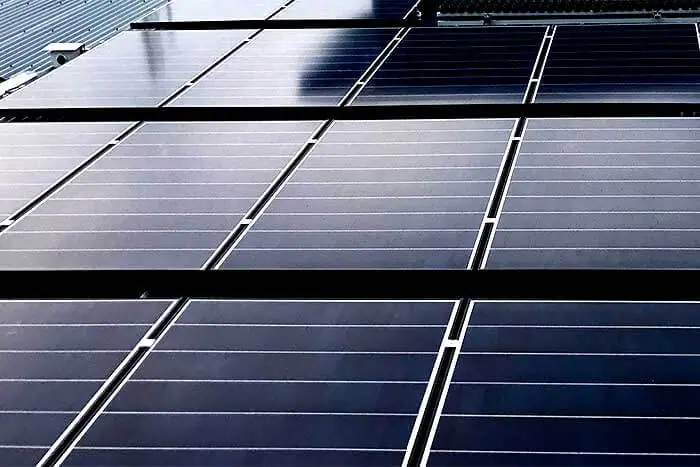
Suntech Standard Module
This series features both 60 and 72-cell solar panels made from monocrystalline and polycrystalline materials for higher module efficiency.
Model
- Suntech Standard Poly 60-cell 275-285W
- Suntech Standard Mono 72-cell 335-360W
- Suntech Standard Poly 72-cell 320-345W
- Suntech Standard Poly 72-cell 1500V 340 – 345W
- Suntech Standard Poly 120 half-cell 275-290W
Features
- Monocrystalline and polycrystalline
- 5-busbar/half-cell technology
- 0.7% annual degradation rate
- 12-year product warranty
- 25-year linear power warranty with an 80.7% power output guarantee
- IP68-rated junction box
- Up to17.7% module efficiency
- Withstands extreme wind (3,800pa)and snow (5,400pa) loads
Cell technology
Suntech’s Standard Module employs the 5-busbar design technology, which helps reduce internal resistance and improves current flow for higher efficiency. It also uses the PID technology to avoid potential losses in the cells and improve its performance in low-light conditions.
The Suntech Standard Poly half-cell 275 – 290W solar panel also uses the half-cell technology to minimize hotspots that cause panel degradation.
Efficiency
Suntech is really working to improve their solar panels, assuring homeowners of over 90.0% of the panels’ initial output within the first 10 years and an 80.08% output efficiency after 25 years.
Warranty/ Guarantee
All Suntech Standard module panels come with a 12-year product warranty and a 25-year linear power warranty.
Peak Performance
The solar power technology and innovations from Suntech allow their Standard Modules to hit a maximum output of 345W with an overall 17.4% efficiency under the right conditions.
The panels have also proven to perform very well in low-light, cloudy, and hazy conditions.
Panels needed for 6.6kW solar system
A 6.6kW Suntech solar system may require about 19 solar panels to meet your daily energy demands.
Datasheet
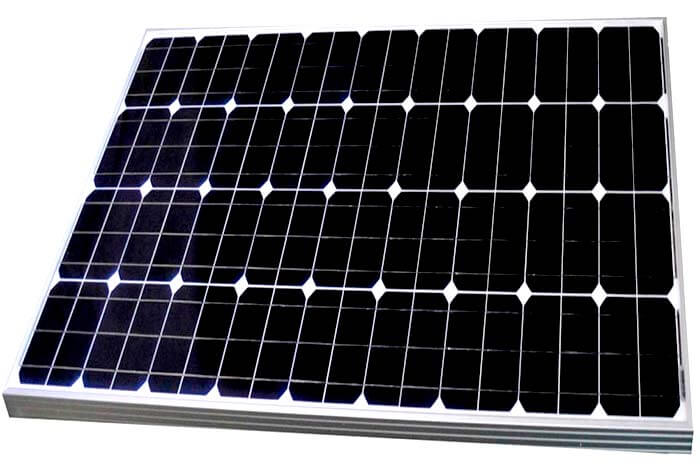
Suntech PERC Mono (HyPro Series)
Suntech developed this series as an improvement of their standard module. The series consists of monocrystalline panels only, which are way more efficient than the Standard Modules.
Model
- Suntech Perc Mono 60-cell 290-320W
- Suntech Perc Mono 60-cell 1500V 310-315W
- Suntech Perc Mono 60-cell 360-385W
Features
- Monocrystalline
- PERC/5-busbar technology
- 0.7% annual degradation rate
- 12-year product warranty
- 25-year linear power warranty with an 80.7% power output guarantee
- IP68-rated junction box
- Up to19.8% module efficiency
- Withstands extreme wind (3,800pa)and snow (5,400pa) loads
Cell technology
These panels use PERC technology to improve their efficiency and output. They also use the local Aluminum Black Surface Field (BSF) on the Hypro-cells to increase the efficiency margin.
Suntech PERC 72-cell solar panel is the best-performing panel in this series. It uses the 5-busbar design, which reduces the risk of microcracks, eliminates the cell’s internal resistance, and improves the panel’s current distribution. This results in improved efficiency and performance even during shading.
Efficiency
Suntech solar installers assure you of a low degradation rate of 0.7% annually after the first year. Therefore, you can expect nothing short of 90.0% of the nominal output within 10 years and an 80.8% guaranteed output after 25 years.
Warranty/ Guarantee
Suntech PERC Mono panels come with a 12-year product warranty and a 25-year performance warranty. These warranties are about 20% better than the standard 10-year warranties from most Tier 1 companies.
Peak Performance
In the best conditions, Suntech PERC Mono solar modules have a maximum output of 385W and an efficiency of 19.8%. This is one of the best efficiencies in the solar market today.
Panels needed for 5kW solar system
The high module conversion efficiency and output of these panels ensure that solar systems of any size require a few panels to meet their daily energy target. A 5kW solar system will take only 12 solar panels.
Datasheet

Suntech Double glass Series
The Suntech Double Glass series combines excellent efficiency, technology, and simplicity to make their panels more efficient and reliable.
Model
- Suntech Double Glass Standard Poly 60 cell
- Suntech Double Glass Standard Poly 72 cell
Features
- PERC Polycrystalline
- Double glass/5-busbar technology
- 0.5% annual degradation rate
- 12-year product warranty
- 30-year linear power warranty with 83% power output guarantee
- IP67-rated junction box
- Up to16.8 module efficiency
- Withstands extreme wind (2,400pa)and snow (2,400pa) loads
Cell technology
The Double glass technology blends the 5-busbar technology with PERC technology to increase the solar cells’ output by over 25 – 30%. The research and development team ensures that the PV cells’ rigorous process minimizes the mismatch losses by more than 2% and makes a better overall product.
The glass-to-glass structure without a frame is also designed to be strong and provides high mechanical capacity.
Efficiency
The output range of this solar panel after 10 years stands at around 93.0%, and after 25 years, its power output efficiency should be no less than 83.0% – higher than most solar power manufacturers.
Warranty/ Guarantee
For the two solar panels in this series, Suntech provides a 12-year product guarantee and a 30-year linear power guarantee.
Peak Performance
Under the ideal conditions, these panels can generate a maximum of 330W with a 16.8% efficiency, which is lower than that of the PERC cells.
Panels needed for 3kW solar system
For a 3kW solar system, you’d need around 10 solar panels. This is because the efficiency of the panels is quite low. It’s, therefore, not ideal for homeowners with small roof spaces.
Datasheet
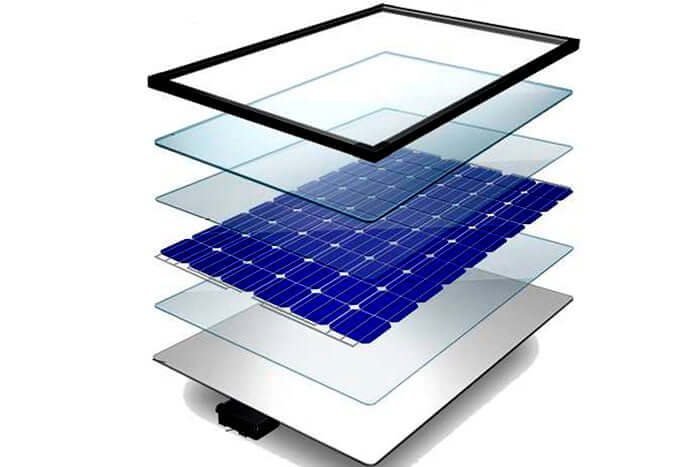
Bifacial PERC Mono (HiPerforma series)
Suntech’s Bifacial PERC Mono series, also known as the HiPerforma Series, is the company’s best-performing solar panel range. It became popular because of its high output and efficiency.
Model
- Bifacial PERC Mono 72-cell
- Bifacial PERC Mono 120-cell
- Bifacial PERC Mono 144-cell
Features
- Monocrystalline Silicon 166mm
- Bifacial PERC/double glass/half-cut cell technology
- 0.45% annual degradation rate
- 12-year product warranty
- 30-year linear power warranty with 84.95% power output guarantee
- IP68-rated junction box
- Up to20.6 module efficiency
- Withstands extreme wind (3,800pa)and snow (5,400pa) loads
Cell technology
This series uses the Bifacial PERC technology, double glass technology, and the half-cut cell technologies to drastically improve its solar efficiency and output. The panels also use the PID and LID technologies, which reduce losses and improve power output by up to 25%.
Efficiency
Within the first year, you can expect around a 98.0% power output of its initial capacity. By the 25th year, the panels’ output will stand at 84.95%.
With a slow degradation rate of 0.45% per year, you are assured of a faster Roi and more durability.
Warranty/ Guarantee
Suntech provides a 10-year product warranty and a 25-years performance warranty for this series. However, make sure you read the warranty instructions on the website to ensure it applies to your case.
Peak Performance
At optimum conditions, the panels can attain a 450W output with a 20.6% efficiency.
Panels needed for 10kW solar system
Thanks to these panel series’ high efficiency and output, you’ll only need 22 solar panels of the HIPerforma series panels to sustain your energy demands. These are the only panels I would recommend for smaller roofs if Suntech is your go-to renewable energy manufacturer.
Datasheet
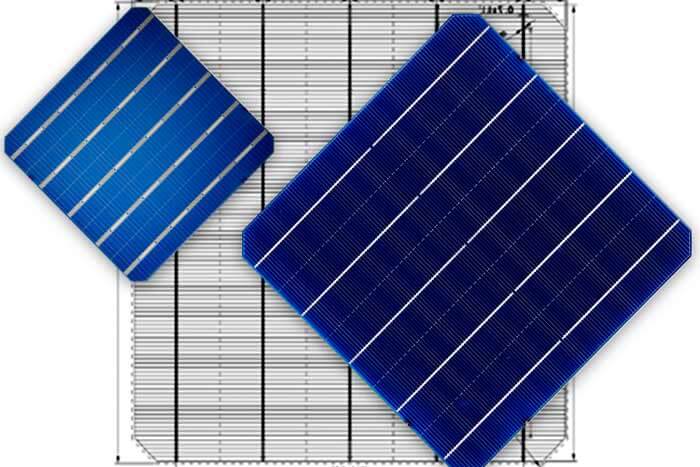
Latest leap forwards for Suntech solar panels
Suntech is a famous PV solar manufacturer that has been in the renewable energy industry for 20 years. The cumulative historical shipment of the company exceeded 25GW, spread all over 100+ countries.
Suntech solar panels come with high module efficiencies that make them very reliable. By 2011, a standard Suntech solar panel had a module efficiency of 14.9%, 2-5% higher than most panels in the solar market. Today, Suntech panels (polycrystalline and monocrystalline) achieve a module efficiency of more than 20%. This has placed Suntech as a global PV industry leader.
Suntech’s Ultra X and Ultra V series have module efficiencies of 21.2% and 21.3%, the best of the brand.
The company values technological innovation and is dedicated to improving production technology and the R&D( research and development) technology to ensure their customers get the most reliable and highest quality products.
Why Suntech solar panels?
Since its revival, Suntech Power has focused on PV research and development to improve the quality and efficiency of the panels they produce.
To reach and connect with the Australian Market, the company has partnered with several solar power companies in the country, including UNSW, ANU, and Monash University. This has enabled them to utilize modern cell technologies to produce solar panels, hitting efficiencies of up to 20.6%.
The company also offers a better than average product guarantee of 12 years and a performance warranty of 25 years. The warranties cover around $120 in labor costs for the first panel and $60 for each subsequent panel.
| STPXXXS – C54/Nshb | STPXXXS – C54/Nshm | STPXXXS – C54/Nshtb+ | STPXXXS – C54/Nshkm+ | |
| Cells Number | 108 Cells | 108 Cells | 108 Cells | 108 Cells |
| Cell Type | N-type Monocrystalline silicon | N-type Monocrystalline silicon | N-type Monocrystalline silicon | N-type Monocrystalline silicon |
| Power Output | 410-430W | 420-440W | 405-425W | 420-440W |
| Solar Panel Efficiency | 22.0% | 22.50% | 21.80% | 22.50% |
| Annual Power Degradation | 0.40 % | 0.40 % | 0.40 % | 0.40 % |
| Dimensions | 1722 × 1134 × 30 mm | 1722 × 1134 × 30 mm | 1722 × 1134 × 30 mm | 1722 × 1134 × 30 mm |
| Weight | 21.0 kg | 21.0 kg | 21.0 kg | 21.0 kg |
| Product Warranty | 15 years | 15 years | 15 years | 25 years |
| Performance Warranty | 25 years | 25 years | 25 years | 30 years |
| Operational Temperature Range | -40 °C to +85 °C | -40 °C to +85 °C | -40 °C to +85 °C | -40 °C to +85 °C |
| STPXXXS – C72/Nsh+ | |
| Cells Number | 144 Cells |
| Cell Type | N-type Monocrystalline silicon |
| Power Output | 565-585W |
| Solar Panel Efficiency | 22.60% |
| Annual Power Degradation | 0.40 % |
| Dimensions | 2278 × 1134 × 30 mm |
| Weight | 32.0 kg |
| Product Warranty | 15 years |
| Performance Warranty | 30 years |
| Operational Temperature Range | -40 °C to +85 °C |
| STPXXXS – C78/Nsh+ | |
| Cells Number | 156 Cells |
| Cell Type | N-type Monocrystalline silicon |
| Power Output | 615-635W |
| Solar Panel Efficiency | 22.70% |
| Annual Power Degradation | 0.40 % |
| Dimensions | 2465 × 1134 × 35 mm |
| Weight | 35.1 kg |
| Product Warranty | 15 years |
| Performance Warranty | 30 years |
| Operational Temperature Range | -40 °C to +85 °C |
| STPXXXS – C54/Umhb | STPXXXS – C54/Umhm | |
| Cells Number | 108 Cells | 108 Cells |
| Cell Type | Monocrystalline silicon | Monocrystalline silicon |
| Power Output | 390-410W | 395-415W |
| Solar Panel Efficiency | 21.0% | 21.30% |
| Annual Power Degradation | 0.55 % | 0.55 % |
| Dimensions | 1722 × 1134 × 30 mm | 1722 × 1134 × 30 mm |
| Weight | 21.0 kg | 21.0 kg |
| Product Warranty | 15 years | 15 years |
| Performance Warranty | 25 years | 25 years |
| Operational Temperature Range | -40 °C to +85 °C | -40 °C to +85 °C |
| STPXXXS – C72/Pmh+ | STPXXXS – C72/Vmh | |
| Cells Number | 144 Cells | 144 Cells |
| Cell Type | Monocrystalline silicon | Monocrystalline silicon |
| Power Output | 535-555W | 540-560W |
| Solar Panel Efficiency | 21.50% | 21.70% |
| Annual Power Degradation | 0.45 % | 0.55 % |
| Dimensions | 2278 × 1134 × 30 mm | 2278 × 1134 × 30 mm |
| Weight | 32.0 kg | 27.5 kg |
| Product Warranty | 15 years | 12 years |
| Performance Warranty | 30 years | 25 years |
| Operational Temperature Range | -40 °C to +85 °C | -40 °C to +85 °C |
| STPXXXS – D66/Pmh+ | STPXXXS – D66/Wmh | |
| Cells Number | 132 Cells | 132 Cells |
| Cell Type | Monocrystalline silicon | Monocrystalline silicon |
| Power Output | 650-670W | 655-675W |
| Solar Panel Efficiency | 21.60% | 21.70% |
| Annual Power Degradation | 0.45 % | 0.55 % |
| Dimensions | 2384 × 1303 × 35 mm | 2384 × 1303 × 35 mm |
| Weight | 37.5 kg | 33.5 kg |
| Product Warranty | 15 years | 12 years |
| Performance Warranty | 30 years | 25 years |
| Operational Temperature Range | -40 °C to +85 °C | -40 °C to +85 °C |
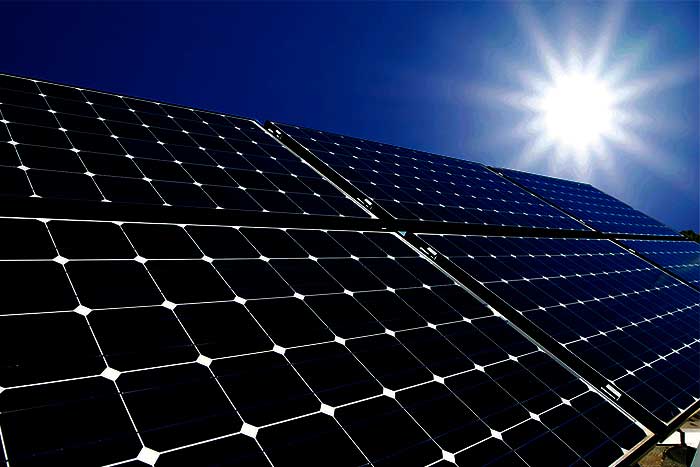
Cell technology
Thanks to their innovation, research, and development team, Suntech has perfected the use of a combination of cell technologies to improve their panels’ overall output and efficiency.
Their panels feature the PERC (Passivated Emitter Rear Cell) technology with the Half-cut cell technology and the PID technology.
PERC technology is fantastic for improving a panel’s output by allowing it to absorb more sunlight from its rear side. The half-cut cell technology involved cutting full PV cells into two, reducing the internal resistance and improving its efficiency.
Suntech solar panels also boast of their IP68-rated junction box, which is waterproof and great for installations.

SUNTECH solar panel specification/ datasheet
| Standard Module | HyPro Series | Double glass Series | Hi-Performa series | |
|---|---|---|---|---|
| Cell Number | 60 – 72, 120 half cells | 60 – 72 cells | 60 – 72 cells | 60 – 72 cells |
| Cell Type | Mono & Poly | PERC Monocrystalline | PERC Monocrystalline | Monocrystalline Silicon 166mm |
| Power Output | 345W | 385W | 330W | 450W |
| Panel Efficiency | 17.4% | 19.8% | 16.8% | 20.6% |
| Annual Power Degradation | 0.7% | 0.7% | 0.5% | 0.45% |
| Dimensions | 1960 x 992 x 40mm | 1990 x 992x 40mm | 1980 x 990 x 5mm | 2096 x 1040 x 35mm |
| Weight | 18.3 – 22.1kg | 18.3 – 22.1kg | 19.6 – 23.3kg | 23.9 – 28.9kg |
| Product Warranty | 12 years | 12 years | 12 years | 12 years |
| Performance Warranty | 25 years | 25 years | 30 years | 30 years |
| Operational Temperature Range | -40°C to 85°C | -40°C to 85°C | -40°C to 85°C | -40°C to 85°C |
| Made in | China | China | China | China |
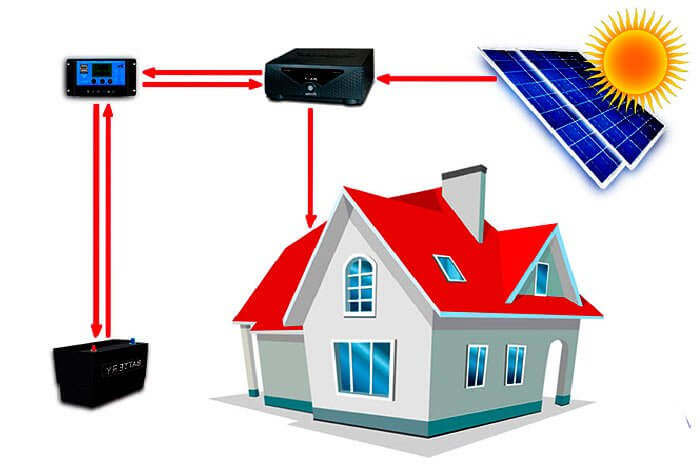
FAQs
Are SUNTECH solar panels Tier 1?
Yes! Despite its history of financial troubles, Suntech Solar has attained a stable financial position in the renewable energy market through its parent company, Shunfeng International Clean Energy Limited (SCFE). Their reputation in the market is still good, and their panels are known to be very reliable.
Who makes SUNTECH solar panels?
Suntech Power Holdings Co., Ltd. The Chinese company runs its productions from its headquarters in Wuxi, Jiangsu.
Where are SUNTECH solar panels manufactured?
Suntech solar has production factories in Wuxi, Luoyang, Shanghai, Qinghai, Japan, Germany, and Arizona in the US. They also have offices in Dubai, Australia, Spain, Switzerland, Italy, Japan, Germany, the US, and China.
How long do SUNTECH solar panels last?
Around 25 – 30 years. Suntech solar panels can easily last more than 25 years, depending on your usage patterns and solar panel maintenance habits.
Are SUNTECH Solar panels reliable?
Yes! Suntech solar panels have received international recognition all over Europe by the EuPD Research center for being the top PV brand. Their prowess in research and innovation has allowed them to come up with durable and high-performing solar panels.
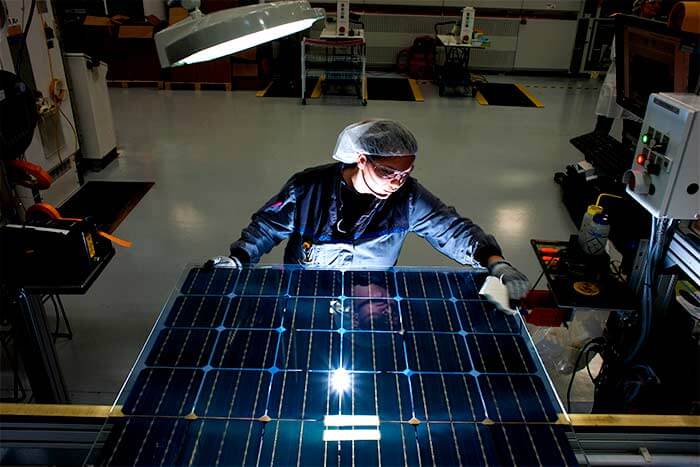
Table of Contents
Toggle
